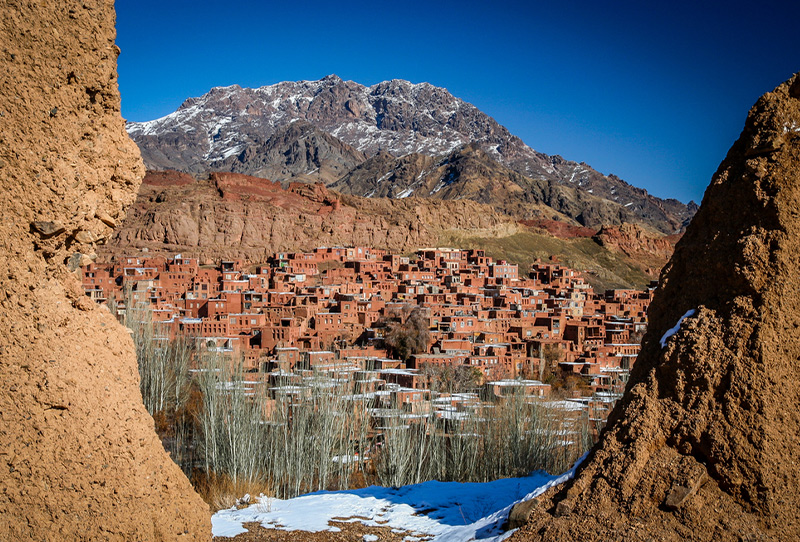The village of Abyaneh is situated approximately 40 kilometers northwest of the city of Natanz in Isfahan Province. The history of this village, which was built on the mountain wall known as Karkas, dates back 1,500 years. Therefore, it is not surprising that it boasts numerous historical artifacts. In this article, we will delve into the fascinating aspects of Abyaneh Village, including its history, unique architecture, cultural significance, and the experiences that await visitors. If you would like to learn more about this village, join Eligasht for further exploration.
Book Iran Air flights from London to Tehran and Tehran to London with Eligasht UK:
History of Abyaneh Village
The local people refer to Abyaneh as “Viuna.” The name Viuna is derived from two words: “Vi,” meaning willow, and “Viyaneh,” meaning willow grove. The reason why this village is known by this name is that it used to be filled with willow trees in ancient times. According to a census conducted in 1981, the village had 500 houses. Research conducted by archaeologists on the old houses of this village has revealed that their design and construction can be traced back to the Seljuks, Sassanians, Safavids, and Qajars.
Architecture of Abyaneh Village
The houses in this historical village are constructed using bricks and clay. The rooms of these houses feature windows, and verandas, which add a special beauty to the structures. Nearby the village, there is a clay mine that was previously used to create the facades of the houses in this village. Architects and engineers believe that it is no longer possible to build any houses on the Karkas mountain wall. Consequently, people have moved to the nearby hills along the highway to shelter their livestock and agricultural products, where they construct their houses.
Most of the people in this village make a living through agriculture, animal husbandry, and gardening, and they still use traditional methods to carry out these activities. For agricultural tasks, they obtain water from the seven qanats. The agricultural products of this village include potatoes, wheat, and barley, and its orchard products include pears, plums, walnuts, and apples.
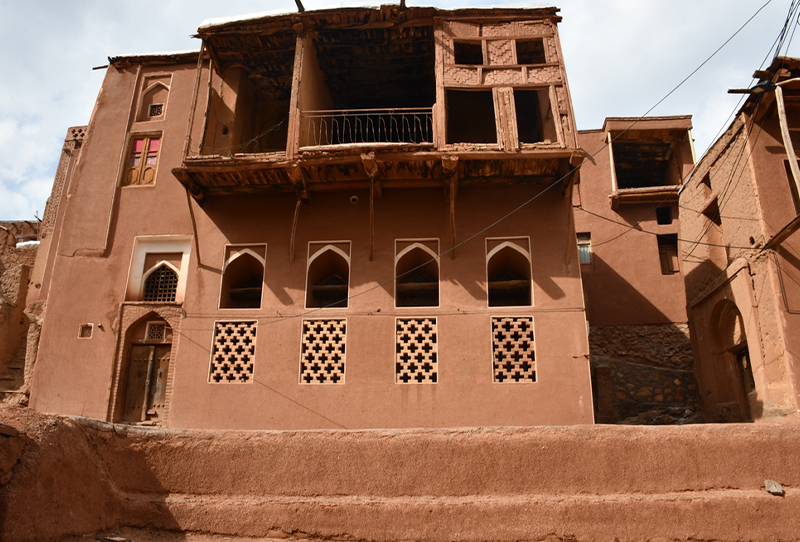
Attractions of Abyaneh
Previously, women in this village used to spend their lives weaving beautiful traditional garments, but now people are more engaged in carpet weaving. There are around 30 different carpet-weaving workshops in this village. The people of this village have spent many years without much interaction with other cities, and for this reason, their dialect, culture, and way of dressing have not changed much compared to the past. Women wear colorful floral dresses and white headscarves, while men wear loose, long, black trousers.
Among the historical structures of this village is an ancient fire temple built during the Zoroastrian era. There are also three castles located in different parts of the village, which are considered attractions. The village is home to several shrines, the most famous of which is the Hinzah Shrine located in the southeastern part of the village inside a valley. The mausoleums of Emamzadeh Yahya and Emamzadeh Isa are among the other religious buildings in this village.
Luxury and Convenience Unite: Experience Unforgettable Stays at Abbasi Hotel in Isfahan
The most delicious local dishes of Isfahan for tourists
The warm hospitality of the locals
Abyanehis are known for their warm hospitality and friendly nature. Visitors to the village are warmly welcomed by the locals, who take great pride in sharing their cultural heritage. Engaging in conversations with the villagers provides a unique opportunity to learn about their customs, traditions, and way of life.
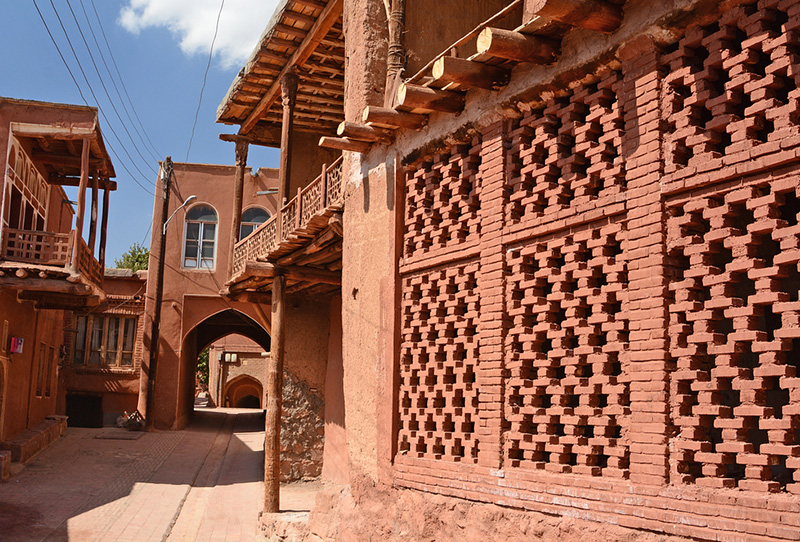
Traditional festivals and celebrations
Abyaneh Village hosts several traditional festivals and celebrations throughout the year, which offer visitors a chance to witness the village come alive with music, dance, and colorful festivities. The most notable festival is the “Persian New Year” (Nowruz), which marks the beginning of spring and is celebrated with great enthusiasm and joy.
Handicrafts and local products
The villagers of Abyaneh are skilled artisans, known for their exquisite handicrafts. Visitors can explore the local market, where they will find a wide array of handmade products, including traditional textiles, pottery, carpets, and jewelry. Purchasing these unique souvenirs not only supports the local economy but also allows visitors to take a piece of Abyaneh’s cultural heritage home with them.
Experiences for Visitors
Exploring the village on foot
Abyaneh Village is best explored on foot, allowing visitors to fully immerse themselves in its enchanting atmosphere. Walking through the narrow alleys, admiring the unique architecture, and interacting with the friendly locals create an unforgettable experience. Don’t forget to capture the stunning views of the surrounding mountains and the breathtaking sunset over the village.
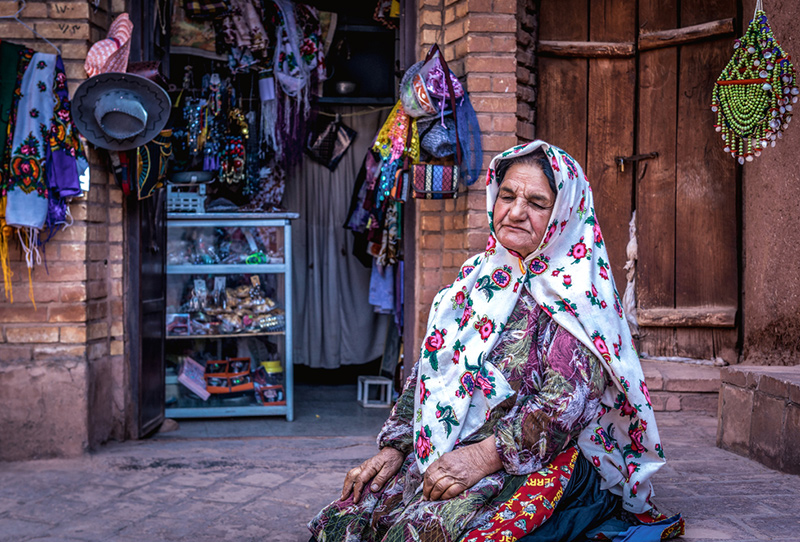
Visiting the local museum
The village is home to a small museum that showcases artifacts, photographs, and traditional costumes, providing visitors with a deeper understanding of Abyaneh’s history and cultural heritage. Exploring the museum is a great way to enhance your knowledge and appreciation of this ancient village.
Enjoying traditional cuisine
No visit to Abyaneh Village is complete without sampling the local cuisine. Traditional dishes, such as “Ash Reshteh” (a hearty soup with herbs and noodles) and “Chelo Kabab” (grilled meat with saffron-infused rice), offer a delightful culinary experience. Many local eateries serve these authentic dishes, allowing visitors to savor the flavors of Iranian cuisine.
Hiking and nature exploration
For nature enthusiasts, Abyaneh Village is surrounded by stunning natural landscapes, making it an ideal destination for hiking and nature exploration. The nearby Karkas Mountains offer breathtaking views and opportunities for outdoor activities. Hiking trails lead to picturesque viewpoints, where visitors can enjoy panoramic vistas of the surrounding valleys and mountains.
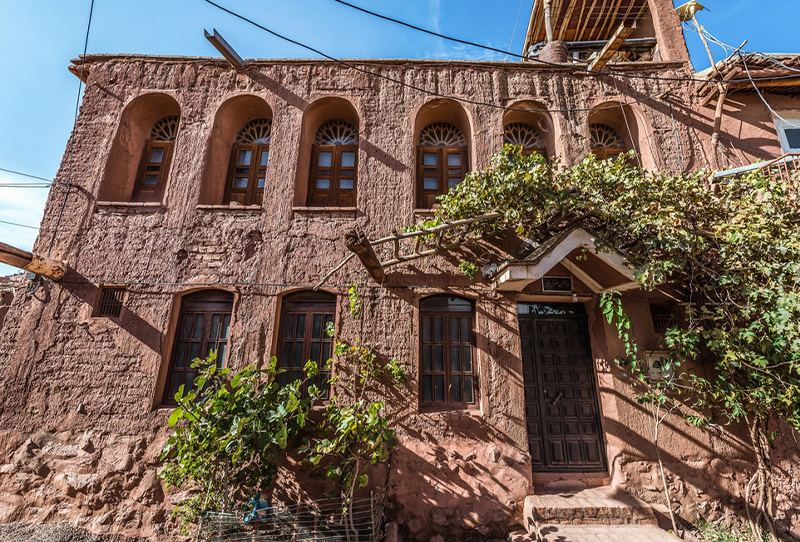
Final words
Abyaneh Village is a true treasure, offering a unique blend of history, culture, and natural beauty. From its well-preserved architecture to its warm and welcoming locals, every aspect of the village contributes to its charm and allure. Whether you’re interested in delving into Iran’s rich history, immersing yourself in local traditions, or simply enjoying the breathtaking scenery, Abyaneh Village is a destination that should not be missed. So, pack your bags, and embark on a journey through time in this ancient beauty.
FAQ
1- What is Abyaneh and where is it located?
Abyaneh is a historical village located in the central part of Iran, specifically in the Isfahan province. It is situated at the foot of the Karkas Mountains and is known for its unique architecture, rich cultural heritage, and picturesque landscapes.
2- What makes Abyaneh a popular tourist destination?
Abyaneh draws tourists from around the world due to its well-preserved traditional buildings, vibrant red mud-brick houses, and traditional clothing worn by the locals. The village offers a glimpse into the ancient Persian culture and lifestyle, making it a fascinating place to explore.
3- Can visitors stay overnight in Abyaneh?
Yes, there are a few traditional guesthouses and accommodations available for visitors who wish to experience the village’s charm and hospitality. Staying overnight allows tourists to fully immerse themselves in the local culture and enjoy the tranquility of the village.
4- How can I reach Abyaneh from major cities in Iran?
Abyaneh is easily accessible from major cities in Iran. From Isfahan, it takes approximately two hours by car to reach the village. Buses and taxis are also available for transportation. If you are traveling from Tehran, it takes around five to six hours by car, and there are bus services available as well. It is recommended to check the current transportation options while planning your trip to ensure a smooth journey.
